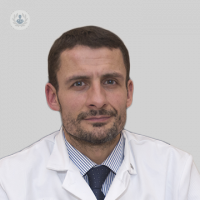Craniofacial surgery and fissures
Written by:
What is craniofacial surgery?
We can define craniofacial surgery as the surgical treatment of all deformities that affect the head and face, whether of congenital or acquired cause. In the surgical management of craniofacial deformities the type of surgical intervention will be fundamentally depending on the type and severity of deformity that the patient has at that moment and of his / her state at the time of the intervention.
What are the syndromes involved in this area and what are they?
Craniofacial surgery is indicated in the surgical treatment of congenital malformations that affect the shape of the head and face, such as Ticher Collins syndrome, Apert syndrome, Crouzon's disease, craniosynostosis, hypertelorism or the increase of distance between both orbits. In the management of those traumatic or oncological sequelae that affect the shape of the head and face and that require a combined craniofacial approach for its handling. The treatment of certain localized tumors, for example, at the base of the skull that require a transfacial approach or combined with a cranial and facial approach. Treatment of cleft palate and cleft lip. And the treatment of the sequelae, usually of traumatic origin, such as the absence of bones in the head that require a complete surgical reconstruction to restore the form and the function.
What is the treatment and how is the operation developed?
The different surgical techniques used in craniofacial surgery depend on the type of pathology that we are going to handle. All of them are complex treatments that require multidisciplinary management in which we are involved several specialists, such as neurosurgeons, maxillofacial surgeons or plastic surgeons. We performed a pre-surgical study using image tests and stereolithographic models that artificially reproduce the patient's craniofacial pathology, which we will perform before being taken to the operating table. The intervention is always performed under general anesthesia and usually in the first two years of age in the case of malformative pathologies affecting children. The treatments will generally consist of reconstructing the deformity that has been created, in the case of the skull reconstructing again the shape of the cranial bones, or in the case of the face reconstructing again the form of the face to restore both aesthetics and the function. In the treatment of cleft lip and palate, treatment is performed in the first year of age. Cleft lip, or cleft lip, is usually treated in the first months of life, between six weeks or nine months, and cleft palate approximately in the first year of age.
After the operation, what care should patients follow?
After surgery, the patients go to the intensive care unit where they will receive all the necessary care, both nursing and physicians, until their passage to the plant, improving their recovery and avoiding the complications that may arise after the intervention. Once discharged, most of these patients, we follow up that can last from a few months to a few years, during which time they can receive other secondary interventions to improve both their aesthetic and their function, in order to of avoiding the possible complications derived from the pathology initially treated or the surgical technique employed. Families are always given care guidelines at home, such as care of wounds, types of feeding patterns that should follow these patients, especially in the case of cleft lip and palate, and the periodic reviews that we are carrying out by the whole multidisciplinary team that has intervened, be it the maxillofacial surgeon or the neurosurgeon. Always taking into account that these treatments last years at times and, generally, until adulthood, thereby achieving that the patient is as satisfied as possible with the result, both aesthetic and functional obtained.




